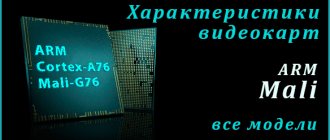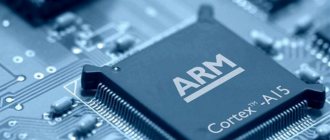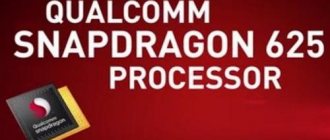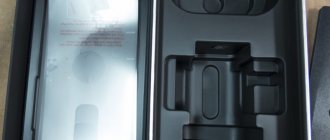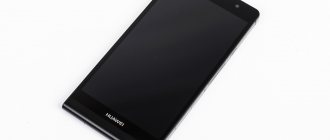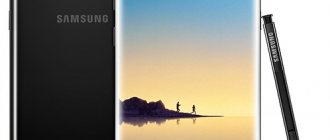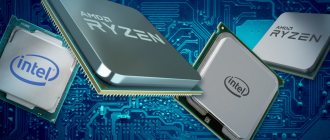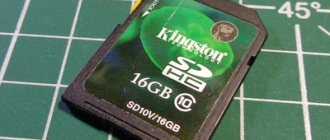The Mali graphics core was developed by the Norwegian division of ARM - ARM Norway (formerly Falanx). Currently, the product line includes a number of models: multimedia graphics processors mali-55, mali-200, mali-300, mali-400, mali-450, mali-T604, mali-T622, mali-T624, mali-T628 , mali-T658, mali-T678, mali-T720, mali-T760, mali-T820, mali-T830, mali-T860 and mali-T880, as well as mali-V500, mali-V550 video GPUs and display controllers mali-DP500, mali-DP550. and the latest multimedia GPUs mali-G31, mali-G51, mali-G52, mali-G71, mali-G72, mali-G76.
Technical details [edit | edit code]
Mali-55 [edit | edit code]
Mali-55
is the first product in this line and the first attempt by ARM to make its own graphics accelerator. Mali-55 supports the OpenGL ES 1.1 standard and can process up to 1 million triangles per second, in addition, it is the world's smallest graphics chip, with a die area of only 1 mm². The first model that has a Mali-55 graphics chip is the LG Renoir, however, the graphics chip in this phone cannot process graphics, but is only used to optimize the interface.
Mali-200 [edit | edit code]
Mali-200
- ARM's next step in developing its own graphics accelerators for mobile devices. Compared to the Mali-55, the 200 model supports OpenGL ES 2.0 and can process up to 16 million triangles per second at a graphics chip frequency of 275 MHz. The 200th model has one geometry processor and one pixel processor, thanks to which it can process 1 pixel per clock, so at a frequency of 275 MHz the graphics chip can process 275 million pixels per second [1]. The Mali-200 graphics chip is available in two versions - LP and GP, which differ in clock speed. The area occupied on the chip during production using the 65 nm process technology is 4.1 mm².
Mali-300 [edit | edit code]
Mali-300
is the first chip from ARM that can reproduce Sony PSP-level graphics. Mali-300 is a further development of the Mali-200 architecture; the maximum frequency of the graphics chip has been increased to 395 MHz, which allows increasing performance to 30 million triangles per second. Mali-300 is the first solution in the Mali line of graphics accelerators, which has its own graphics memory of 8 kB. [2]
Mali-400 [edit | edit code]
Mali-400
is a further development of the Mali-300 architecture. Mali-400 has the same characteristics as Mali-300, but it is a modular solution that can include up to 4 graphics cores, unlike Mali-55 and Mali-200/300 - exclusively single-core solutions. Due to the fact that the Mali-400 can be a multi-core graphics chip, the die area has been increased to 4.7 mm², in addition, the Mali-400 has increased graphics memory of 32-256 kB [3] (depending on the number of cores) compared to 300 -th model, which had only 8 kb. The 400 model has 1 geometry processor and can have up to 4 pixel processors. Like the 200 model, the Mali-400 processes only 1 pixel per clock, but thanks to multi-core and the ability to have from 1 to 4 pixel processors, the performance of the 400 model can be 4 times greater, thanks to the ability to process each pixel with each of the 4 pixel processors when The two hundredth and three hundredth models have only 1 such processor. [14]
Mali-450 [edit | edit code]
Mali-450
- 8-core Mali-400 with some improvements in the field of instruction execution per clock.
Mali-T600 [edit | edit code]
Mali-T604, Mali-T622, Mali-T624, Mali-T628, Mali-T658 and
Mali-T678
are the latest designs from ARM. To better clarify the situation, it should be noted that the first generation of T600 (variants T601, T604 and T658 (first generation)) was introduced earlier, and the new one (Mali-T624, Mali-T628 and Mali-T678 (second generation)) - a little later . The Mali-T600 is ARM's first universal shader architecture that supports OpenGL ES 1.1, OpenGL ES 2.0, OpenGL ES 3.0, DirectX 11 FL 9_3, DirectX 11, OpenCL 1.1 Full Profile and Google Renderscript Compute. The promised performance of the older model Mali-T658 (8 graphics cores) is approximately 4-5 times higher than the capabilities of the Mali-400. The flagship T600 accelerators of the second generation are T628 and T678 (as of 2013). Both of them are 8-core chips, and the main difference between them (and between any other graphics and GPU-optimized solutions in general) lies in the structure of each shader processor. The T628 has two ALUs, one LSU and one texture unit per shader processor, while the T658 has double the number of ALU units.
ARM introduced new generation Mali graphics accelerators
ARM introduced new members of the Mali family of graphics accelerators. We are talking about Mali-T760 solutions for high-end smartphones and tablets and Mali-T720 for mid- and entry-level products. The main licensees of these accelerators are MediaTek, Rockchip and LG Electronics. However, Samsung representatives also noted that Mali graphics will continue to be used in Exynos family processors.
First, we should talk about the flagship ARM Mali-T760 accelerator, which, according to the company, will provide a next-generation user environment on mobile devices. The main advantages of the new product include:
- Significantly improved performance per watt - improved by approximately 400% compared to the Mali-T604;
- compared to the previous generation of Mali graphics (T628 and T978), the scalability of the accelerator was doubled and increased to 16 computing cores (both overall performance and performance per core increased);
- thanks to ARM Frame Buffer Compression and Smart Composition technologies, the use of memory bandwidth was reduced overall by more than 50%, which also had an impact on reducing power consumption;
- placement on a single-chip system is simplified, especially for versions with a large number of cores, thereby accelerating the time to market for final products;
- designed to work closely with ARM Cortex-A processors and the ARM CoreLink CCI-400 bus;
- ARM, together with TSMC, has already optimized the Mali-T760 for both the popular 28nm HPM process and the 16nm FF process.
Perhaps an even more interesting product is the ARM Mali-T720 accelerator. The company calls it the successor to the Mali-400 MP and Mali-450 MP graphics accelerators, used primarily in entry-level tablets and smartphones. Like the Mali-450 MP, it can be used in configurations with up to 8 cores, however, unlike the previous generation solutions, the Mali-T720 supports OpenGL ES 3.0, like the flagship Mali-T760.
Over the past 2 years, shipments of Mali graphics chips have increased more than 10 times, gradually turning them into a standard in the Android ecosystem. ARM notes that Mali graphics are used in more than 50% of Android tablets and more than 20% of Android smartphones today. Given such high popularity, the Mali-T720 accelerator was designed specifically for the Android operating system and optimized to minimize cost and with an eye on the entry-level market. ARM created the Mali-T720 to minimize manufacturing challenges for chip designers and reduce time to market for final products.
The advantages and main features of the ARM Mali-T720 include the following:
- more than 150% superior to ARM Mali-400 in terms of performance per watt;
- the design and layout of the GPU have been optimized, allowing for faster integration of the GPU onto the final chip;
- On-chip area has been reduced by nearly 30% and performance has been increased by more than 50% compared to the Mali-450 MP;
- support for the latest mobile APIs OpenGL ES 3.0, OpenCL and RenderScript will be available for the first time in the entry-level smartphone and tablet market.
- ARM and TSMC have already optimized the Mali-T720 for the 28nm HPM process that is popular today.
It is not yet clear when the first solutions using Mali-T720 and Mali-T760 graphics will hit the market, but you shouldn’t expect them this year. Optimizations for TSMC's 28 nm process technology, however, give reason to hope for the appearance of a SoC with new graphics in the first half of 2014.
Models [edit | edit code]
| Name | Maximum number of GPU cores | Maximum L2 cache size | Technology support | Architecture | Usage | Notes | ||||
| OpenGL ES | OpenVG | OpenCL | Direct3D | Vulkan | ||||||
| Mali-55 | 1 | — | 1.1 | 1.0 | n/a | Interface optimization | [5] | |||
| Mali-200 | 1 | — | 2.0 | 1.1 | Utgard [6] | — | [1] | |||
| Mali-300 | 1 | 8 KB | — | [2] | ||||||
| Mali-400 MP | 4 | from 32 KB to 256 KB [7] | — | [3] | ||||||
| Mali-450 MP | 8 | from 32 KB to 512 KB [7] | — | [4] | ||||||
| Mali-T604 | 4 | 256 KB | 3.1 | 1.1 | 1.1 + Renderscript [en] | 9_3 | M>[8] (1st generation) | Graphics, computing | [9] [10] | |
| Mali-T622 | 2 | [10] [11] | ||||||||
| Mali-T624 | 4 | Midgard (2nd generation) | [12] | |||||||
| Mali-T658 | 8 | [13] | ||||||||
| Mali-T628 | 8 | [14] | ||||||||
| Mali-T678 | 8 | [15] [16] | ||||||||
| Mali-T720 | 8 | from 32 KB to 256 KB [7] | Midgard (3rd generation) | Mali-T720 | ||||||
| Mali-T760 | 16 | from 256 KB to 2 MB [7] | 11.1 | Mali-T760 | ||||||
| Mali-T820 | 4 | from 32 KB to 256 KB [7] | 3.1 | 1.1 | 1.2 + Renderscript [en] | 9_3 | Midgard (4th generation) | Mali-T820 | ||
| Mali-T830 | 4 | from 32 KB to 256 KB [7] | Mali-T830 | |||||||
| Mali-T860 | 16 | from 256 KB to 2 MB [7] | 11_1 | |||||||
Implementation [edit | edit code]
Mali GPU in different variations can be found in the following chipsets:
Mali GPUs are the intellectual property of ARM Limited and are the graphical part of the ARM microprocessor architecture used in the production of SoC chips, well known as Snapdragon, Helio, MT, Exynos, Kirin mobile processors.
ARM Limited develops the processor architecture; manufacturers MediaTek, Qualcomm, HiSilicon, Samsung buy a license with the appropriate documentation. They make their own adjustments - choose the class, generation, number of cores and CPU frequency, change the final characteristics of the Mali GPU: the number of computational units and operating frequency. Qualcomm products occupy a special place; in the production of mobile processors, they use graphics accelerators of their own design - Adreno.
To make things easier to understand, the main building material of GPUs is computational units, which are designated in processor specifications as MP (Mali T830 MP2, for example). The number of these “smart” bricks, in tandem with the frequency, determines the performance of the video accelerator. In the Mali characteristics table, you can observe the GFLOPS indicators (number of operations per second, with a comma), the first value is the peak performance of 1 block at the minimum frequency, the second value is the theoretical potential when all blocks operate at the maximum frequency.
Frequency indicators, dimensions, heat dissipation, energy efficiency largely depend on the applied manufacturing standards (nm), double values in this column indicate that the chips are or were produced using different standards, at the discretion of the manufacturer.
In theory, everything is extremely simple - the newer the architecture, the more blocks and the higher the frequency, the higher the performance. In practice, we will never see the maximum number of computing units of Mali graphics accelerators in smartphones; this is the lot of mini-PCs and laptops that have a small cooling system. To date, the maximum recorded for Mali-G72 is MP18 (18 units) - Samsung Exynos 9810 mobile processor; for comparison, Mali-G71 is MP20 - Samsung Exynos 8895. A new HiSilicon Kirin 980 chipset with new generation Mali-G76 MP10 graphics is planned, The performance promises to be higher than the Adreno 630 graphics used in the Snapdragon 845.
Implementation
Mali GPU in different variations can be found in the following chipsets:
| Manufacturer | Chipset name | Mali graphics chip version |
| Allwinner | A10, A13 | Mali-400 MP[17] |
| Allwinner | H3 | Mali-400 MP2 |
| Broadcom | BCM2836 | VideoCore IV |
| AMLogic | 8726-M, 8726-MX | Mali-400 MP/MP2[17] |
| AMLogic | S802, S812, S805, M805 | Mali-450 |
| AMLogic | S905, S905X | Mali-450MP |
| AMLogic | S912 | Mali-T820 |
| CSR | Quatro 5300 Series | Mali-400 MP |
| Huawei | HiSilicon Kirin 659 | Mali-T830 MP2 |
| NetLogic | Au1380, Au1350 | Mali-200[18][19] |
| NUFRONT | NuSmart 2816 | Mali-400 MP |
| NUFRONT | NuSmart 2816M | Mali-400 MP |
| NUFRONT | NuSmart 115 | Mali-400 MP |
| MediaTek | MT6572 | Mali-400 MP |
| MediaTek | MT6582 | Mali-400 MP2 |
| MediaTek | MT6592 Octa | Mali-450 [email protected] MHz |
| MediaTek | MT6735 | Mali-T720 |
| MediaTek | MT6753 ARM® Cortex®-A53 1.3GHz x 8 | Mali T720 [email protected] MHz |
| MediaTek | MT6750 8 x ARM Cortex A-53 @1.51 GHz | Mali-T860 MP2 |
| Rockchip | RK3066(40 nm, ARMv7-A, up to 1.6 GHz) | Mali-400 MP4(250 MHz)[20] |
| Rockchip | RK3188(28 nm, ARMv7-A, up to 1.8 GHz) | Mali-400 MP4(600 MHz) |
| Rockchip | RK3288(28 nm, ARMv7-A, up to 2.0 GHz) | Mali-760 MP4 |
| Samsung | S5P6450 Vega | Mali-400 MP[21] |
| Samsung | Exynos 2 Dual 3250 | Mali-400 MP2 @ 400MHz |
| Samsung | Exynos 3 Quad 3470 | Mali-400 MP4 @ 450 MHz |
| Samsung | Exynos 3 Quad 3475 | Mali-T720 @ 533 MHz |
| Samsung | Exynos 4 Dual 4210, 4212 Quad 4412 | Mali-400 MP4[22] @ 266 MHz — @ 400 MHz (533 MHz in Prime) |
| Samsung | Exynos 5 Dual 5250 | Mali-T604 MP4[23] @ 533 MHz |
| Samsung | Exynos 5 Hexa 5260 | Mali-T620 MP4 @ 600 MHz |
| Samsung | Exynos 5 Octa 5420 / 5422 / 5430 | Mali-T620 MP8 @ 533 MHz — @ 600 MHz |
| Samsung | Exynos 7 Octa 7580 | Mali-T720 MP2 @ 600 MHz |
| Samsung | Exynos 7 Octa 5433 | Mali-T760 MP6 @ 700 MHz |
| Samsung | Exynos 7 Octa 7420 | Mali-T760 MP8[24] @ 772 MHz |
| Socle-Tech | Leopard-6 | Mali-200[25] |
| Spreadtrum | SC8810[26], SC6820[27] | Mali-400[28](although synthetic tests show Mali-300) |
| ST-Ericsson | NovaThor U9500, U8500, U5500 | Mali-400 MP[29] |
| STMicroelectronics | SPEAr1340 | Mali-200[30] |
| STMicroelectronics | STi7108, STiH416 | Mali-400 MP[31][32] |
| Telechips | TCC8803, TCC8902, TCC8900, TCC9201 | Mali-200[17][33] |
| WonderMedia | Prizm WM8950 | Mali-400 MP[34] |
